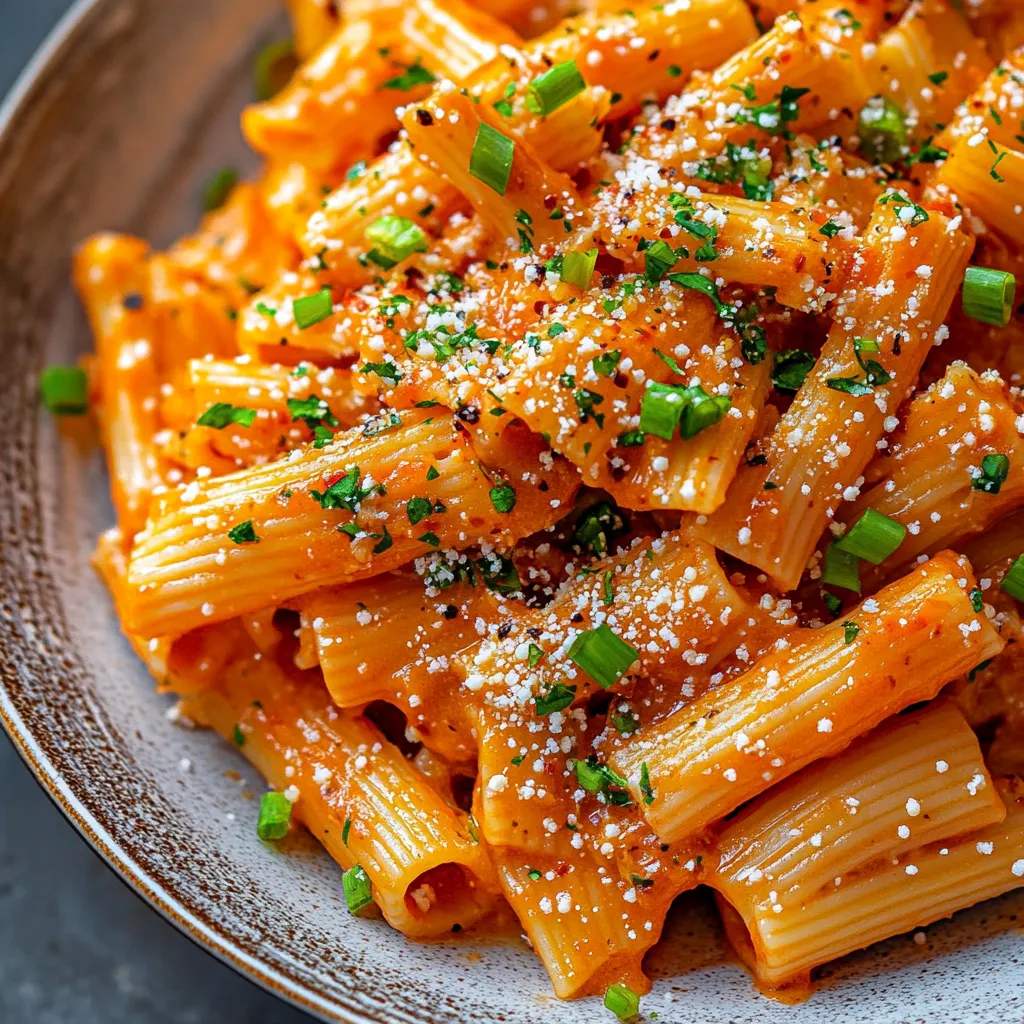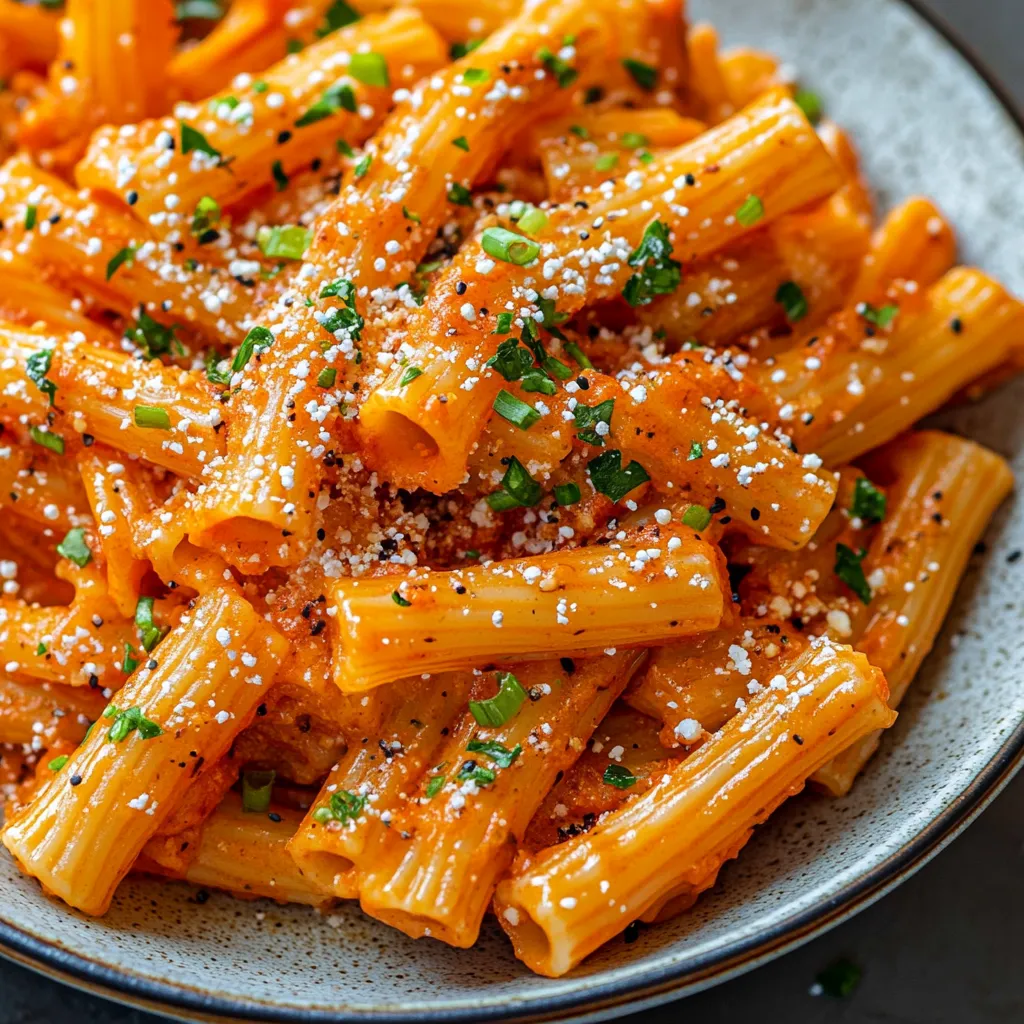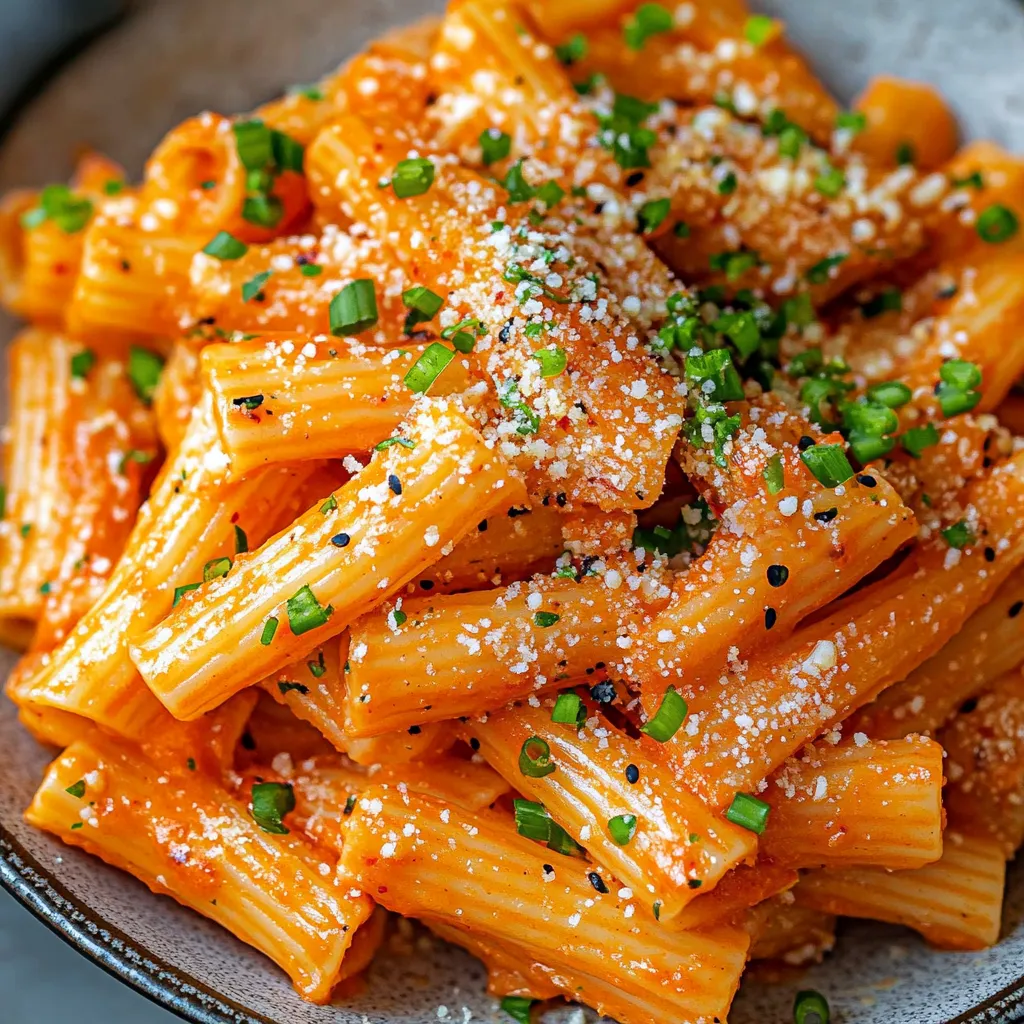 Pin it
Pin it
This gochujang pasta transforms simple ingredients into a creamy, spicy delight that's become my go-to recipe when I need comfort food with a kick. The fusion of Korean gochujang with Italian pasta creates an unexpected but wonderfully harmonious dish that satisfies both my craving for heat and richness in one bowl.
I discovered this recipe during a particularly cold winter when I was craving something warming but didn't want to make another batch of soup. Now it's the first thing my partner requests whenever the temperature drops, and I've shared it with countless friends who have all added it to their regular rotation.
Ingredients
- Olive oil: Creates the foundation for sautéing the garlic and adds a subtle richness
- Garlic cloves: Minced fresh provide an aromatic base that infuses the entire dish
- Water or chicken stock: Forms the cooking liquid for the pasta giving it more flavor
- Beef stock cube: Adds umami depth and savory notes throughout the sauce
- Salt: Enhances all the flavors and is essential for properly seasoned pasta
- Rigatoni pasta: Works perfectly as the ridges and tube shape capture the sauce beautifully
- Gochujang paste: The star ingredient bringing sweet spicy fermented flavor
- Full-fat cream cheese: Creates the luxurious creamy texture without separating when heated
- Parmesan cheese: Adds salty nuttiness and helps thicken the sauce
- Dried parsley: Brings a touch of herbal brightness to balance the rich sauce
- Spring onions: Garnish with fresh crunch and mild onion flavor
- Chili flakes: Optional for those who want to increase the heat level
Step-by-Step Instructions
- Prepare the Aromatic Base:
- Heat olive oil in a large, deep pan over low heat. Add the minced garlic and gently cook for about 1-2 minutes until fragrant but not browned. This slow cooking releases the garlic flavor without bitterness.
- Create the Cooking Liquid:
- Pour in 4 cups of hot water or stock, add the crumbled beef stock cube and salt. Bring this mixture to a full rolling boil which will create the flavorful base for cooking the pasta.
- Cook the Pasta:
- Add rigatoni directly to the boiling liquid. Cook for about 5 minutes, stirring occasionally to prevent sticking. The pasta will continue absorbing flavor as it cooks in the seasoned water.
- Prepare the Gochujang Mixture:
- Ladle about 1/4 cup of the hot pasta cooking water into a small bowl. Add the gochujang paste and stir until it dissolves completely. This helps it incorporate smoothly into the dish without clumping.
- Combine the Pasta and Sauce:
- When pasta is al dente and most liquid is absorbed, lower heat to minimum. If excess liquid remains, drain pasta but reserve 1/2 cup of cooking water. Add the diluted gochujang and stir to coat pasta evenly.
- Create the Creamy Element:
- Add cream cheese in small portions, stirring continuously until it melts completely into a silky sauce. If sauce seems too thick, gradually add reserved pasta water until you reach desired consistency.
- Finish with Seasonings:
- Turn off heat and stir in Parmesan cheese and dried parsley until fully incorporated. Taste and adjust with black pepper as needed. The residual heat will melt the cheese perfectly.
- Garnish and Serve:
- Top with sliced green parts of spring onions and optional chili flakes. Serve immediately with additional Parmesan cheese on the side for sprinkling.
 Pin it
Pin it
The first time I made this pasta, I was skeptical about combining gochujang with Italian ingredients, but the fermented depth of the Korean chili paste actually complements the creamy cheese in ways I never expected. My favorite part is watching guests try to identify the mystery ingredient that makes this pasta so addictively different from traditional cream sauces.
Adjusting The Spice Level
Gochujang comes in varying heat levels, so start with less if you're unsure about your tolerance. You can always add more later as you taste the developing sauce. For beginners, use 1 tablespoon instead of 2, while heat lovers can push to 3 tablespoons for a more pronounced kick. Remember that the cream cheese mellows the spice considerably, so the final dish won't be as fiery as you might expect from tasting the gochujang alone.
Storage And Reheating
This pasta keeps remarkably well in the refrigerator for up to 3 days in an airtight container. When reheating, add a splash of milk or water as the sauce tends to thicken considerably when cold. Warm it gently over medium-low heat, stirring frequently to prevent scorching. The flavor actually develops nicely overnight, with many of my friends claiming they prefer the leftovers to the fresh version.
Perfect Additions
While delicious on its own, this pasta welcomes additions that can transform it into an even heartier meal. Shredded rotisserie chicken, pan-seared shrimp, or crispy bacon bits make excellent protein additions. For vegetables, try wilted spinach, roasted bell peppers, or sautéed mushrooms folded in at the last minute. I particularly love adding frozen peas right before serving ' they quickly warm through while maintaining their bright color and slight sweetness.
 Pin it
Pin it
This creamy gochujang pasta is truly a fusion comfort dish that's sure to satisfy your cravings and leave you wanting more.
Frequently Asked Questions
- → Can I use a different type of pasta for this dish?
Yes, while rigatoni works great for holding the creamy sauce in its ridges and tubes, you can substitute with penne, fusilli, or farfalle. Any pasta shape that can trap sauce will work well in this gochujang pasta dish.
- → How can I adjust the spice level?
The spice level is easily customizable by adjusting the amount of gochujang paste. Start with 1 tablespoon for mild heat, the recommended 2 tablespoons for medium heat, or up to 3-4 tablespoons if you prefer it quite spicy. You can always add more gradually while tasting as you cook.
- → What can I substitute for gochujang paste?
While gochujang has a unique flavor profile, you could substitute with a mixture of miso paste and sriracha or chili paste with a touch of honey for sweetness. The flavor won't be identical, but it will provide similar savory-sweet-spicy elements.
- → Can I make this dish vegetarian?
Absolutely! Simply replace the beef stock cube with a vegetable stock cube or vegetable broth. The rest of the ingredients are already vegetarian-friendly, making this an easy dish to adapt.
- → How do I store and reheat leftovers?
Store leftovers in an airtight container in the refrigerator for up to 3 days. When reheating, add a splash of water or milk to loosen the sauce, as it will thicken when cold. Warm gently on the stovetop or microwave until heated through, stirring occasionally.
- → What proteins pair well with this pasta?
This gochujang pasta pairs wonderfully with grilled chicken, sautéed shrimp, or crispy tofu for added protein. For a Korean-inspired twist, serve with bulgogi beef or gochujang-marinated pork on top.
